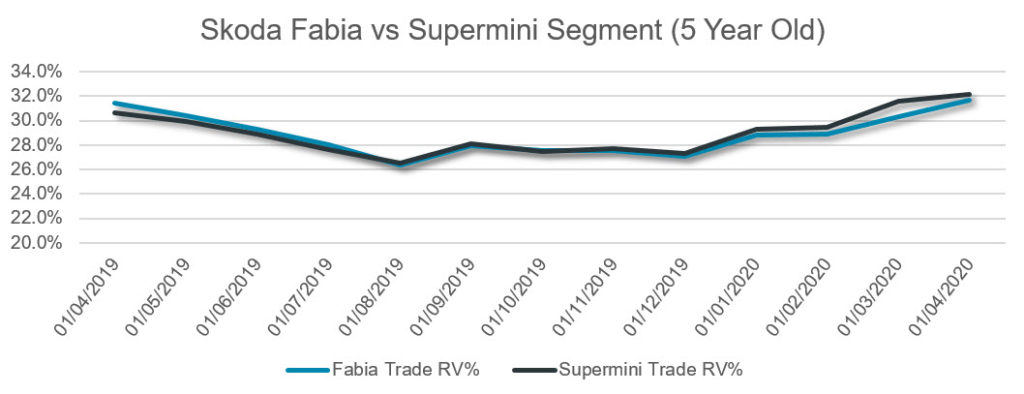Volkswagen mechanicals
Introduced to the public in September 1999 at the Frankfurt motor show, the Skoda Fabia went into full production the following month replacing the Skoda Felicia. Initially producing only hatchback and saloon variants, at the Paris Motor show in September 2000, Skoda introduced the estate Fabia Combi. The Fabia’s success stemmed from Volkswagen developed mechanicals. These reputable underpinnings brought quality and reliability to the Eastern European brand coupled with Skoda’s value driven pricing.
Skoda introduced the Fabia vRS variant in 2003. Unusually for a hot hatch, power came from only a diesel engine with no petrol alternative. Around the top Gear track, the Fabia vRS proved to be quicker than similarly priced Mini Cooper. Today the Fabia vRS has something of a cult following with many modified by enthusiasts. Current retail values of the early variants are in the region of £1,700.
In 2004 Skoda launched the first Fabia facelift with revised front grille, fog lights and remodelled the rear lights whilst also introducing the Sport variant. Initial power for this variant was a 1.4 petrol engine, however that was quickly dropped in favour of the less powerful but free revving 1.2 HTP engine. Further minor specification revisions launched in 2006.
The Skoda Fabia vRS SE
In 2007 Skoda produced 1,000 limited edition Fabia vRS SE’s featuring individually numbered black leather seats with blue piping, sporty red brake callipers, “Race Blue” metallic paint, cruise control, darkened rear windows and a six CD auto-changer. Glass’s Live Retail pricing shows used examples currently advertised in the region of £3,000.
The second generation Skoda Fabia, introduced in March 2007 at the Geneva Motor Show was longer than its predecessor and took some styling cues from the Skoda Roomster. The engines were a mix of newer Volkswagen Group engines with some carry-overs from the first generation model.
The second generation facelift launched in 2010 with the bumper restyled together with the front fog lights making the revised car look noticeably different from its predecessor. Revision of the engine line-up saw the introduction of the 1.2 TSI turbo charged petrol engine. A sports vRS version also returned to the range featuring the engine from the Volkswagen MK5 Polo GTI, a 1.4 twin-charged petrol unit producing 180PS. Today, Glass’s data suggests that consumers should expect to pay around £4,500 in the current used market.
New Safety Features Launched
October 2014 saw the third generation Fabia released at the Paris Motor Show offering more passenger room with an extended wheelbase. Safety was a big part of the third generation and came equipped with the front assist safety system which gathers data to automatically brake in the event of an emergency. All of the engine selections came from the MK5 Volkswagen Polo. The 2018 model year saw another facelift for Fabia and Fabia Combi. The biggest change was the removal of all diesel engines from the range.
The Supermini Segment
The Skoda Fabia falls into one of the most competitive segments in the UK car market – the Supermini segment. The following chart compares average Fabia residual values at five years of age against the Supermini segment as a whole. It clearly demonstrates that the Fabia holds its own in a fiercely competitive environment.




 Close
Close